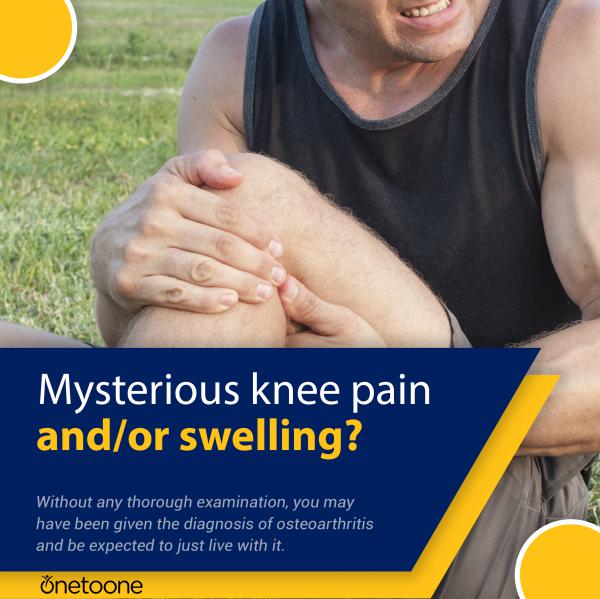
Without any thorough examination, you may have been given the diagnosis of osteoarthritis and be expected to just live with it. However, you may be experiencing Saphenous Nerve Entrapment.
Saphenous nerve entrapment is a frequently overlooked cause of persistent medial (inner) knee pain. I chose to write about it because I saw 2 cases of random knee pain and swelling recently.
Nerve entrapment is often the cause of pain when you cannot recall a mechanism of injury. This condition can result from low grade irritation over a long period of time from sustained postures or repetitive activities, or perhaps resulting from guarding mechanisms that never fully resolved from a previous injury. Symptoms can be episodic (come and go), may come on randomly, and may resolve randomly as well.
The saphenous nerve is the longest branch of the femoral nerve. It travels from the groin, down the front of the inner thigh, past the inner knee, and into the inner lower leg. Because of its long course, it can become entrapped in multiple locations from the thigh to the lower leg. The saphenous nerve is often entrapped by connective tissues where it pierces the muscles of the inner thigh, or where it takes a sharp turn at the inner knee. The nerve can also be injured as a result of an improperly protected knee during surgeries or activity that puts pressure on the nerve (kneeling).
It is a pure sensory nerve, meaning it is responsible for sensation and not muscle contraction. As this is a purely sensory nerve, weakness should not be noted with an isolated injury or entrapment of this nerve. Some mild weakness may be present because of guarding from pain, but no significant direct weakness will result from the nerve impingement.
Symptoms of entrapment: may include swelling of the knee, a deep aching sensation in the thigh, knee pain, tenderness along the nerve pathway, and altered sensation in the knee and lower leg such as numbness, tingling, pins and needles, reduced sensitivity to heat or cold, reduced vibration sense, and dullness to touch. The main diagnostic features of this condition are altered sensation (vibration sense is usually the first to be affected), and reproduction of symptoms during a femoral/saphenous nerve neurodynamic test.
Other diagnoses given for this condition may be arthritis, bursitis, patella femoral pain syndrome, or chondromalacia patella.
Treatment to resolve this issue may be as simple as learning to do some gentle nerve gliding exercises. Effective treatment may also involve soft tissue release (via massage or physio); and gentle manual mobilization techniques that reduce mechanical forces on the nerve, improve nerve mobility, reduce muscle guarding, and restore blood flow to the affected nerve.
It may not be arthritis, and you may not have to just live with it.




